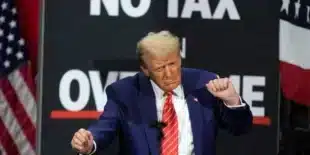Frozen Russian assets in Europe will soon provide financial support to Ukraine, as Kyiv faces intensified assaults from Moscow’s forces. Western nations are now seeking ways to maximize this financial assistance.
Finance ministers from the G7 economies convened in Stresa, Italy, to discuss strategies for utilizing the proceeds from approximately €260 billion ($282 billion) in Russian foreign currency reserves that were frozen after Russia’s full-scale invasion of Ukraine in 2022.
“Progress has been made regarding the main issues,” said Italian Economy Minister Giancarlo Giorgetti during a press conference, noting that some legal technicalities remain unresolved. Giorgetti highlighted the unified political stance among G7 countries.
This meeting follows a recent unexpected Russian offensive in Ukraine’s northern Kharkiv region. As Russian attacks escalate, there is growing pressure on Western leaders to provide more military aid to Ukraine’s strained armed forces.
“It is vital and urgent that we collectively find a way to unlock the value of Russian sovereign assets immobilized in our jurisdictions for Ukraine’s benefit,” stated US Treasury Secretary Janet Yellen in a speech in Frankfurt, Germany.
One widely supported proposal among US and EU officials involves lending Ukraine up to $50 billion, using future profits from frozen Russian assets in the EU as collateral. This plan would advance the flow of interest proceeds from these assets to Ukraine immediately, according to Yellen.
G7 finance ministers aim to finalize an agreement that leaders, including President Joe Biden, can approve at a summit in Italy next month. This plan stops short of outright asset seizure, which the EU fears could deter other countries from keeping their assets within the bloc.
Lee Buccheit, a sovereign debt expert, described the proposal as “a halfway house to full seizure.”
Most of Russia’s frozen assets, about €210 billion ($228 billion), are held in the EU, particularly at Euroclear, a Belgium-based financial institution. The EU recently formalized an agreement to use profits from these assets, directing between €2.5 and €3 billion annually to Kyiv, primarily for military aid, starting in July.
This funding approach is legally sound and adaptable, allowing for adjustments based on Ukraine’s evolving needs, explained European Commissioner for Trade Valdis Dombrovskis.
In contrast, the G7 proposal could provide a larger immediate sum. Yellen mentioned that a $50 billion figure was discussed, but no final decision on the loan size has been made.
Another potential approach is a “reparations loan,” where Ukraine would borrow from allies, using its claim for reparations against Russia as collateral. This could grant Ukraine access to more funds than the current windfall profits. If Russia fails to pay reparations, the G7 could use the frozen assets to recover the loan value, ensuring Russia contributes to Ukraine’s reconstruction, estimated by the World Bank at $486 billion over the next decade.
Buccheit remarked, “Short of a regime change in Russia, Putin is never going to pay reparations. This $300 billion is probably the only contribution Russia will ever make towards reparations for what it has done to Ukraine.”


